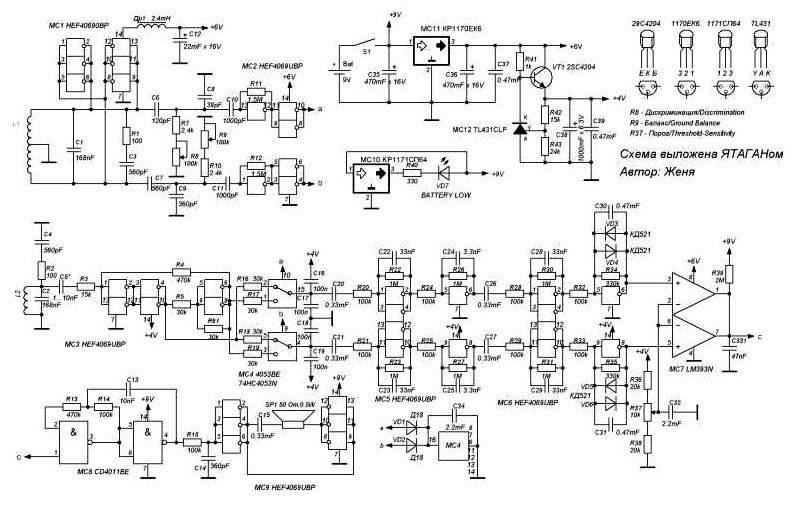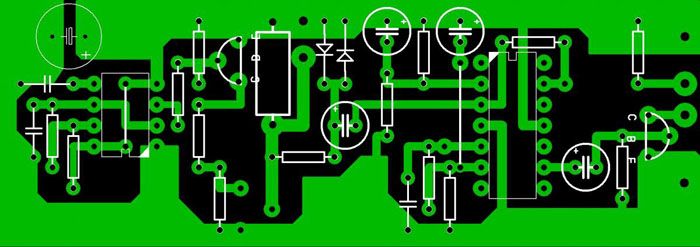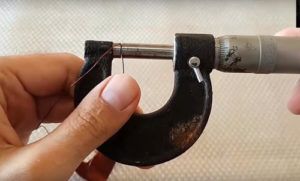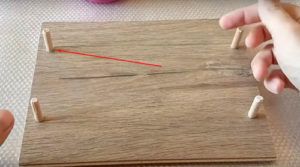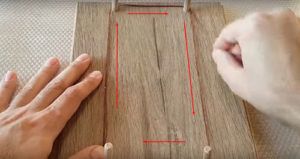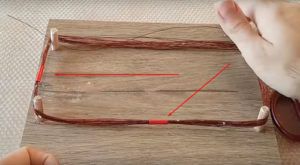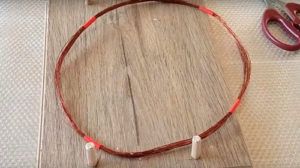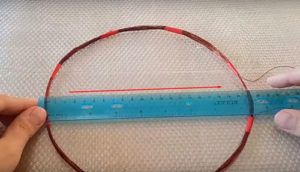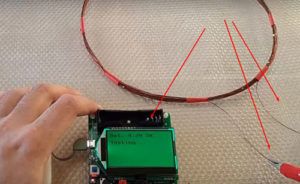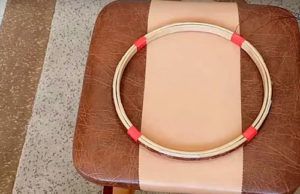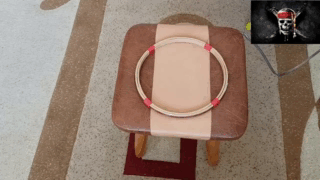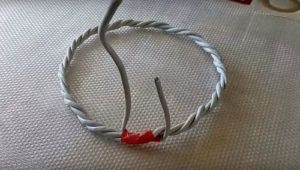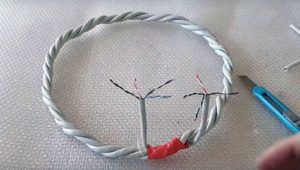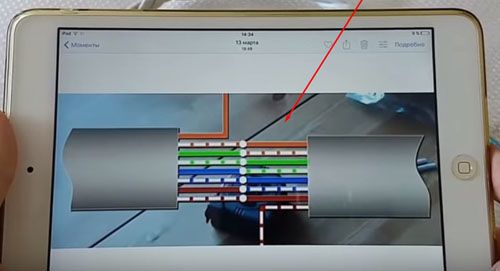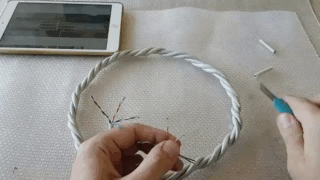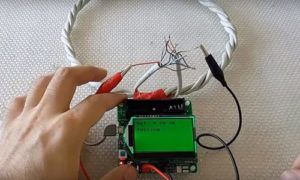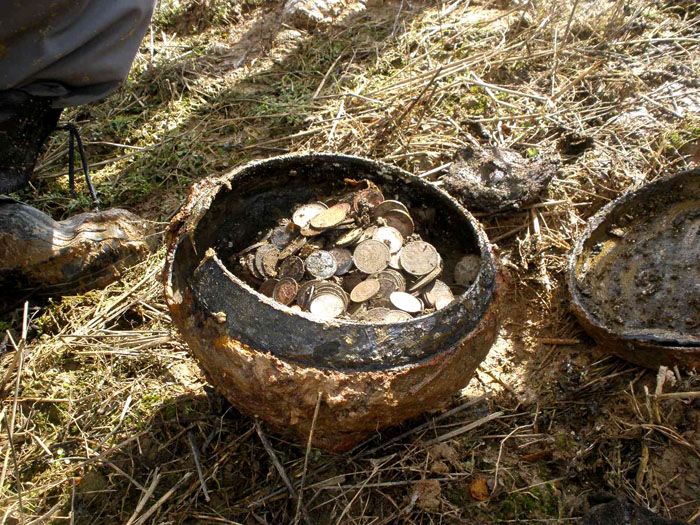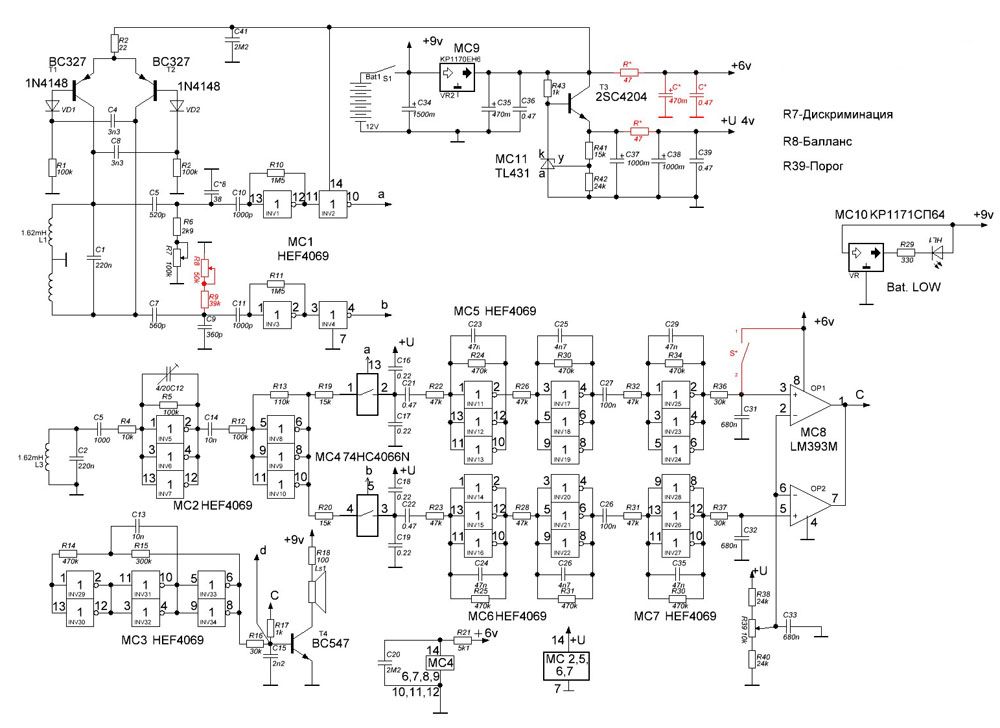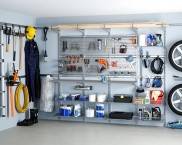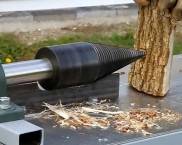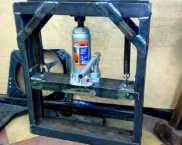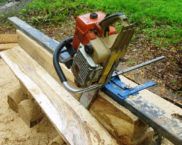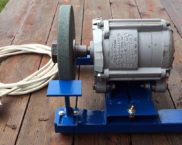How to make a metal detector with your own hands: detailed instructions and diagrams
You just won't believe how many treasures lie literally under our feet. It is clear that we do not even suspect about the presence of a treasure until it responds with a squeak in the metal detector. Without this tool, archaeologists, geological prospectors, search engines and builders cannot imagine work. A professional tool is expensive, so if treasure hunting is a hobby for you, you will certainly think about how to make a metal detector with your own hands. Today, the homemaster.techinfolux.com/en/ editorial board invites you to study some life hacks, working diagrams and proven instructions for making this device. It's not as difficult as it sounds, and even if you are a beginner radio amateur, you can handle the task effortlessly.

Treasure hunt is an exciting hobby that requires knowledge not only in the field of history, but also in technology and electronics
The content of the article
- 1 How a metal detector works and how it works
- 2 Parameters of metal detectors depending on the purpose and technical device
- 3 What types of metal detectors can you make at home with your own hands?
- 4 Homemade metal detector "Pirate": diagram and detailed assembly description
- 5 Is it possible to make an underwater metal detector with your own hands?
- 6 Do-it-yourself Terminator 3 metal detector: detailed diagram and video instructions for assembly
- 7 How to make a metal detector with your own hands with metal discrimination
- 8 Features of deep metal detectors
How a metal detector works and how it works
The principle of operation of the device is based on the laws of physics, which makes it possible to recognize objects at a distance. Action is directed and limited. The more expensive a metal detector is, the greater the radius of its operation and the sensitivity of the detector. Complex models have metal detection function. Each type of metal interacts in its own way with the frequency of the search loop, and the device compares the reaction with the standard and displays information for the operator on the display or gives a sound signal.
In another popular design, the instrument analyzes the phase shift in the transmit and receive coils. When there are no metals in the detector's range, the coil transmits a signal with a small amplitude. As you approach the search object, the amplitude increases. Thus, you can distinguish between non-ferrous and ferrous metals and detect voids in the ground. The device of the metal detector is reflected in the following diagram.
Parameters of metal detectors depending on the purpose and technical device
Metal detectors for hobbyists are the simplest devices of the dynamic type. The search head of the device must constantly move, only in this way the desired signal can appear. If you stop moving, the signal will disappear. Such simple detectors are convenient in that they do not require complex settings and allow to exclude medium soils. Among the shortcomings, we have to note its weak sensitivity and frequent false alarms in difficult areas.
Mid-range devices have the best sensitivity. In the factory configuration, this device comes with several search heads of different sizes. Certain skills are required to set up the detector. Mid-range metal detectors are capable of detecting metals.
Computerized devices are already a professional instrument with an LCD screen and pointer indication. The memory of his processor is loaded with programs capable of recognizing and distinguishing a signal, classifying each detected object. Professionals independently program devices for the search conditions, excluding unwanted responses.
Gold prospecting tools work not only on coins and jewelry in the ground, but also on native metal. It is not suitable for finding small particles like sand. He does not recognize them, especially if the soil has high mineralization.
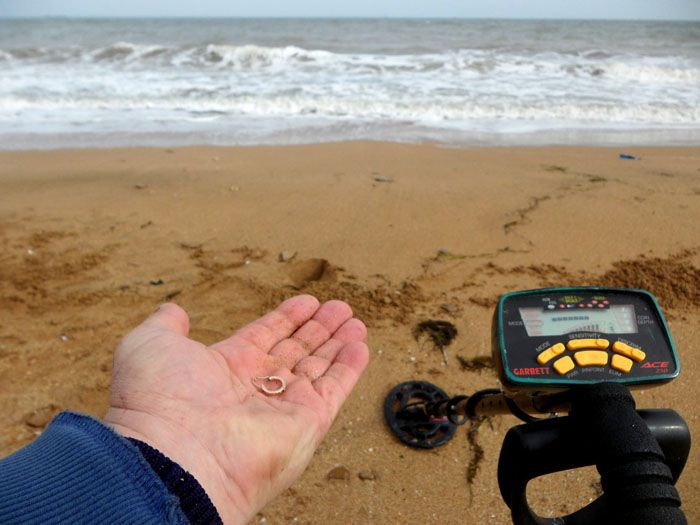
Otherwise, these metal detectors are very sensitive and work great, for example, when looking for gold jewelry in the sand of a beach.
Depth detectors are sharpened for the search for objects located at an impressive depth. They can detect metal at a depth of 6 meters, while other models "pierce" only up to 3. Such devices recognize voids and other internal ground anomalies. Deep detectors work on two coils, one is parallel to the ground surface, the other is perpendicular.
Stationary detectors are frames installed at especially important guarded objects. They calculate any metal objects in bags and pockets of people passing through the circuit.
What types of metal detectors can you make at home with your own hands?
The detectors are divided into 5 main types according to the principle of detecting the desired object.
Let's consider which of the metal detectors are suitable for making with your own hands at home:
| A type | Features: | Is it suitable for DIY making |
|---|---|---|
| Reception-transmission | Works with two induction coils. In the absence of the desired object, the signal does not pass into the receiving coil. | Yes |
| Induction | Combines the functions of both coils. The signal is constant, changing when detecting metal. | No, as a rule, difficulties arise with the selection of the effective signal. |
| Based on a frequency meter | The design of the device includes an LC-generator, which changes the frequency when metal objects are detected. Has a low sensitivity. | Yes |
| With Q-meter | Equipped with an LC generator signal analyzer. Works poorly at low temperatures. | Yes |
| Pulse | Based on the transmission of eddy pulse currents. The signal changes its character depending on the type of metal detected. | Yes |
And now, in more detail about how to make a simple metal detector with your own hands using the example of the Pirate design.
Homemade metal detector "Pirate": diagram and detailed assembly description
If you are just thinking about how to make a homemade metal detector, do not seek to tackle complex models. Start with a simple yet effective Pirate. The name was invented by the author of a homemade product from a combination of Pi (impulse) and Ra-t (radioscope). The name stuck, and the simple and understandable assembly scheme was so fond of users that "Pirate" became one of the most popular homemade products in this area. Currently, there are already 4 modifications of the Pirate scheme. The metal detector is simply assembled by hand, without the use of any specific tools.
The only drawback of this device is that there is no scheme for working with metal discrimination in a self-made metal detector. But for a novice treasure hunter, this is irrelevant.

In addition to the parts required for assembly, you will need a soldering iron, a screwdriver, and insulating tape for work.
Parts for assembling a metal detector
To manufacture the device, you will need to purchase:
- ceramic capacitor - 1 nF;
- 2 film capacitors - 100 nF;
- electrolyte capacitors: 10 μF (16 V) - 2 pieces, 2200 μF (16 V) - 1 piece, 1 μF (16 V) - 2 pieces, 220 μF (16 V) - 1 piece;
- resistors - 7 pieces per 1; 1.6; 47; 62; one hundred; 120; 470 kΩ and 6 pieces for 10, 100, 150, 220, 470, 390 ohms, 2 pieces for 2 ohms;
- variable resistors - 3 pieces for 10 and 100 kOhm, 400 Ohm (1W);
- transistors - 3 pieces, ВС557, IRF740, ВС547;
- 2 diodes 1N148;
- 2 microcircuits: K157UD2 and NE555.
You also need a plastic pipe for the rod, 9V batteries or accumulators and a PEV wire with a diameter of 0.8 mm.
Note! Many are interested in how to make a metal detector from a phone with their own hands. Some developers even offer programs that you can download to your phone and use for this purpose. Serious radio amateurs can only advise you to use some spare parts - for example, a headphone input or a battery, perhaps a board for creating a microcircuit.
DIY metal detector circuits
The simplest Pirate scheme looks like this.
The board can be placed in the case of a pocket receiver or any plastic box of convenient size, even simple junction boxes from the electrician's arsenal are suitable.
An important point! To get rid of possible interference when touching the regulators of the device, all cases of variable resistors are connected to the minus of the board.
If you want to take your experiments further, here is a diagram for making a gold-based metal detector.
If you have assembled the circuit correctly, the device will work properly. Possible problems with the microcircuit.
| Problem | Solution method |
|---|---|
| There is no squeak and reaction to frequency changes. | Select a 10k resistor in series with a capacitor in the 300pF generator. |
| Excessive excitation of the generator, hiss and whistles | Add a 1000pF capacitor with a chassis lead. |
How to assemble a printed circuit board of a metal detector with your own hands
The PCB layout of the metal detector is pretty simple. It can be conditionally divided into several blocks:
- search coil assembly;
- transistor sound amplifier;
- pulse generator;
- amplifier is two-channel.
This is how it looks.
The pulse generator is assembled on the NE555 timer. Through the selection of C1 and 2 and R2 and 3, the frequency is adjusted. The pulses obtained as a result of scanning are transmitted to the transistor T1, and it transmits the signal to the transistor T2. Amplification of the audio frequency occurs on the BC547 transistor to the collector, and headphones are connected.
Note! You can make a metal detector with your own hands without chips. On the net you will find many analog circuits on transistor generators.Such devices will detect metal at a depth of 20 centimeters in the ground and up to 30 centimeters in loose sand.
How to make a coil for a metal detector with your own hands
The coil is an important part of the device. It can be made from copper wire or twisted pair. More details in our master class.
Copper wire coil
Twisted pair coil
Advice! If you want to make a more powerful coil for your metal detector by hand, give it an elliptical shape.
Detailed instructions for setting up a DIY metal detector "Pirate"
For the final assembly of the instrument, you need a plastic tube. The assembly diagram is simple. The sensitivity of the detector is adjusted using potentiometers. Achieve the result so that it recognizes the coin from a distance of 30 centimeters. He "hears" large metal deposits in a meter or a half. "Pirate" does not recognize non-ferrous metals under you or black, so here you just have to dig, and it is possible that you will stumble upon an old trough, and not on a coveted treasure. But in this case, you can take it not in quality, but in quantity, because any metal can be handed over to a recycling center.
How will the "Pirate" look like in the next video. It remains only to note that a construction kit for the manufacture of this device can be bought on the Internet. By the way, it comes with detailed instructions on how to make a metal detector yourself at home using the kit parts.
Is it possible to make an underwater metal detector with your own hands?
Finding underwater treasures is an exciting experience. The chances of finding something of value are not too small, especially if you have some idea of where to look. The "pirate" we talked about can cope with underwater searches. It is only necessary to slightly modify it, making good insulation from moisture and replacing the audio signaling with LED. How it will work in this video.
Do-it-yourself Terminator 3 metal detector: detailed diagram and video instructions for assembly
Another modification of the homemade metal detector is the Terminator. Homemade products are constantly improving the device, and now the third version of the device is popular, working on the principle of induction balance.
We offer you the most detailed description of the assembly of such a device from the craftsman Viktor Goncharov.
Note! For self-assembly with your own hands, you can choose a butterfly-shaped metal detector with two contours. It's a little more complicated, but equally effective.
How to make a metal detector with your own hands with metal discrimination
Discrimination against metals is the ability of an instrument to distinguish between detected material and to classify it. Discrimination is based on the different electrical conductivity of metals. The detector processor analyzes the phase shift between the signals of the two coils and not only distinguishes non-ferrous metals from ferrous, but can recognize whether it is copper, gold or silver. The simplest discrimination process is implemented in pulse devices. They are able to find and distinguish non-ferrous from ferrous metal.
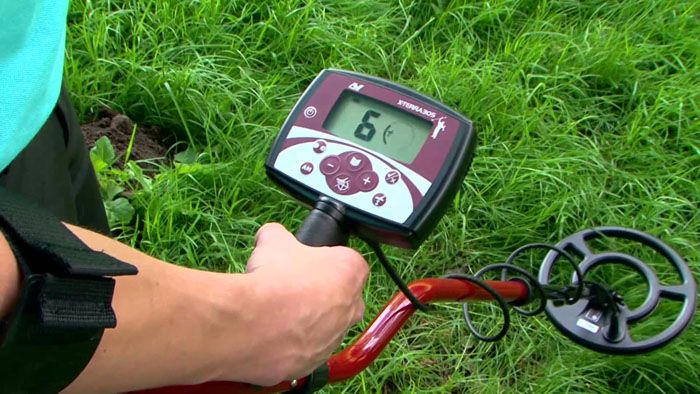
Professional models are equipped with programmable "brains" capable of giving a signal only on the desired object, without distracting the operator to other finds
Note! No matter how professional the device is, do not expect one hundred percent result from it. Many materials have similar electrical conductivity, so the machine can be wrong.
Detailed information on the assembly of such a detector in the video clip.
Features of deep metal detectors
A deep metal detector is attractive because it can detect objects where other instruments are powerless. A good do-it-yourself deep-seated metal detector looks at a depth of 6 meters, and is not hindered by roots, voids or other obstacles. One caveat - with its help you can only detect large objects, and this is understandable, because for the sake of a couple of coins you will not dig a six-meter hole.
And again we are returning to the same universal model of the Pirate detector. It turns out that it is possible to make a deep instrument on its basis, and it is not difficult at all. The modification process is described in this video.
As you can see, nothing is impossible! If you have a fuse, try and experiment. Perhaps, somewhere you will find countless treasures that can radically change your life. If you have experience in assembling such a device and using it, share it in the comments, we will be very grateful to you!







